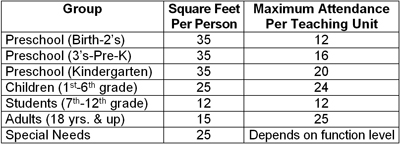 Many churches are struggling to recruit the teachers and leaders needed to staff their groups today. Yet, they have often not taken the simplest and most important steps to recruit leaders. We are commanded to “pray to the Lord of harvest to send out workers” in Matthew 9:35 (HCSB).
Many churches are struggling to recruit the teachers and leaders needed to staff their groups today. Yet, they have often not taken the simplest and most important steps to recruit leaders. We are commanded to “pray to the Lord of harvest to send out workers” in Matthew 9:35 (HCSB).
Every effort to recruit people to serve in the teaching ministry should be bathed in prayer. The teacher should pray and ask the class to pray, as an apprentice and other leaders are recruited. When we pray we should be specific about the needs and God’s leading to the people He is calling out to serve. Teachers should recognize the opportunity their role positions them in equipping and calling out new leaders. The teachers, apprentices, and other leaders needed come from the ranks of the adults actively involved in our churches.
Image what it would be like if every teacher and leader in our groups had an apprentice. This approach should not be limited to adult groups, it should be expected of every person teaching to identify and recruit an apprentice. When teachers are responsible for having an apprentice, future leaders are always in the process of being developed. The biblical basis for apprenticing is grounded in the ministry of Jesus and His disciples. Jesus used this method to recruit and equip the Apostles (Mark 3:14-15). In Acts 11:25-26 we find Barnabas using apprenticing to equip Saul. Then, we find Paul apprenticing Timothy in 1 Corinthians 4:16-17.
The education model of leader development used by many churches is a (train – assign – do) model. Apprenticing is an (assign – do – train) model of leader development. The resulting shift is training comes as a result of teaching or leading experiences. The apprentice being confronted with teaching or leading issues is given training to meet the needs. The needs drive the speed of learning. The apprentice has a person they relate to for training, guidance, and encouragement resulting in accountability. Many people think “just in time learning” is a preferred learning method among adults and the learning sticks more often because of the immediate application for what was learned. Jesus had several disciples who did not end up in his final twelve disciples and even then he had one who was serving for the wrong motive. Teachers are likely to have similar experiences as they apprentice leaders. Not every person you recruit will develop into the leader you intended. Even with losses, it is a great blessing to a teacher to see the people you have apprenticed serving.
In one of the churches where I served, there was a children’s teacher who took apprenticing serious. Over the seven years I served at the church she apprenticed eight or nine different people and four of them took teaching positions in our children’s ministry. If most teachers took apprenticing serious, we would begin to see a significant increase in our teaching ministry team.
A number of years ago at Glorieta Conference Center, I heard a testimony that has stuck with me over the years. An adult teacher shared about being recruited by the pastor to start a new class. After launching the class the pastor asked if he could apprentice someone to take the class at the end of the year. At the point the teacher was sharing this testimony; the teacher had started a new class for 12 years in a row and handed each class off to an apprentice. The teacher had been directly involved in over 220 people being added the church. The church had doubled in size in 12 years.
_______________
Tom Belew is the Small Groups and Childhood specialist for the California Southern Baptist Convention.





